Festival Gilgit Baltistan Culture: Complete Guide to Mountain Celebrations
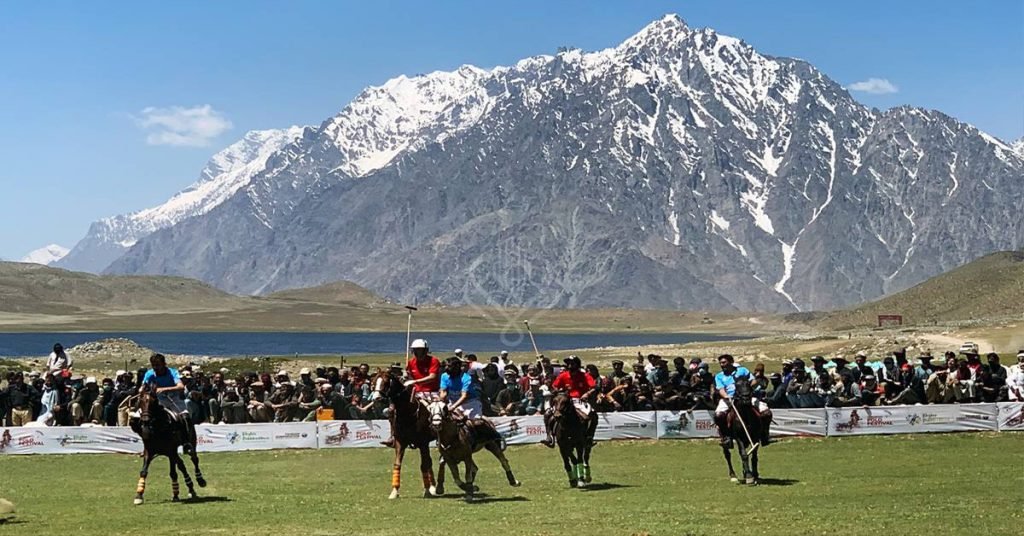

Gilgit-Baltistan’s high valleys aren’t only about glaciers and sky-touching peaks—they’re living cultural landscapes. Across the year, communities mark sowing and harvest, solstice and new year, polo rivalries and shared meals. This guide spotlights the most meaningful celebrations, explains what they represent, and shows us how to experience them respectfully and safely. Dates can shift due to weather or lunar calendars, so always verify with official sources like Visit Gilgit-Baltistan and PTDC before you travel.
What follows centers on Gilgit-Baltistan. You’ll also see a few adjacent Hindukush references (e.g., Kalash festivals in Chitral, Khyber Pakhtunkhwa) clearly labeled for context, because travelers often plan both regions together.
- Check dates: Confirm festival timings with Visit GB or local DC offices.
- Plan early: Rooms sell out weeks ahead for big events like Shandur Polo.
- Pack for altitude: Warm layers year-round; evenings get cold even in summer.
- Be respectful: Ask before photos; follow local dress and prayer-time norms.
- Travel safely: Weather can alter road/flight schedules—keep buffer days.
Table of Contents
The Cultural Landscape of Festival Gilgit Baltistan Culture
Geographic and Ethnic Diversity Shaping Festival Gilgit Baltistan Culture
Festivals mirror the region’s mosaic: Shina speakers in Gilgit and Diamer; Burusho communities in Hunza; Wakhi in Upper Hunza and Gojal; and Balti culture across Skardu, Shigar, and Khaplu. Mountain ecology shapes calendars—short summers compress sowing, harvest, and large gatherings; long winters carry fire rituals, storytelling, and communal feasts.
Historical Influences on Modern Festival Gilgit Baltistan Culture
Centuries of Silk Route exchange brought Persian, Tibetan, and Central Asian influences. You’ll see these threads in Nowruz (Persian New Year) observances, high-altitude polo traditions, and winter rites like May Fung in Baltistan. Modern tourism adds visibility and logistics (stages, schedules), but the core remains community-led.
Spring Festival Gilgit Baltistan Culture: Awakening Traditions
How Nowruz anchors festival Gilgit Baltistan culture
Observed around March 20–21, Nowruz marks renewal in parts of Gilgit-Baltistan with prayer gatherings, shared dishes, and home customs that honor spring’s first light. Visitors should keep ceremonies disturbance-free, participate when invited, and avoid intrusive photography. For timing guidance, track announcements from Visit GB Events and context pieces via UNESCO.
Takhum Rezi spring festival in festival Gilgit Baltistan culture (Ghizer)
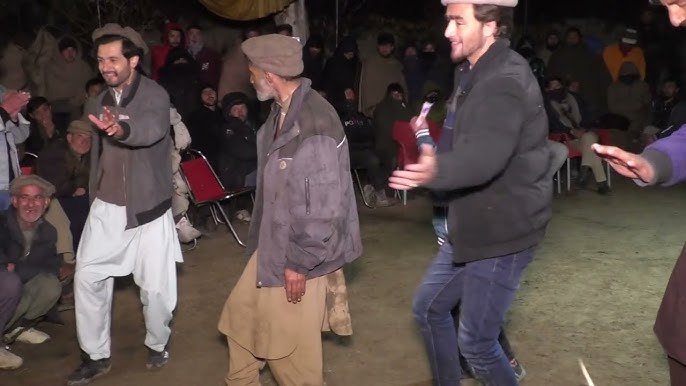

In parts of Ghizer, torch-bearing processions and village gatherings celebrate the turn into the sowing season. Expect music, bonfires, and communal meals. Dress modestly, ask before joining dances, and contribute by buying local snacks or crafts—small actions that support host families and artisans.Spring at a glanceTypical window: Late March–May (verify annually) What you’ll see: New Year rituals, torch ceremonies, early fieldwork blessings Good to know: Mornings and nights are cold; bring insulated layers and sturdy shoes Respect cue: Always ask before photographing people, prayer spaces, or private courtyards.
Summer Festival Gilgit Baltistan Culture: High-Altitude Celebrations
Shandur Polo Festival – Polo at the Roof of the World
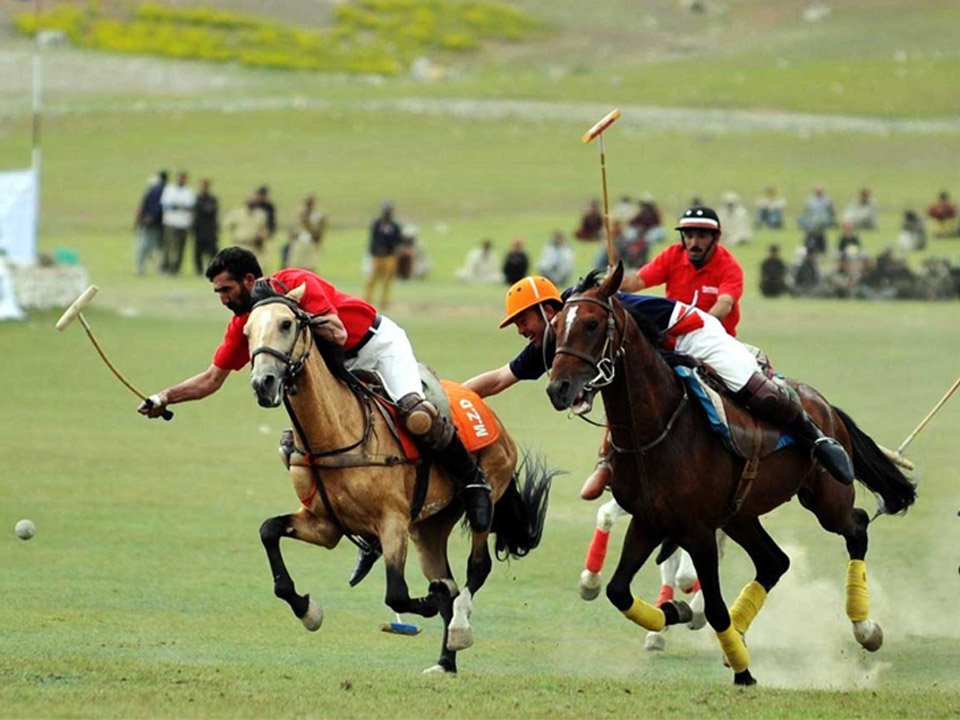

Every July, Shandur Pass becomes the stage for the world’s highest polo ground at 3,700 meters. Teams from Gilgit-Baltistan and Chitral clash in free-style polo, surrounded by thousands of visitors camping under starry skies. The festival is more than sport—it blends music, folk dances, and food stalls. Accommodation is limited to tents, so travelers should prepare for rustic conditions and chilly nights.
Ginani Festival – Hunza’s Harvest Celebration


Held in late June or early July, Ginani marks the wheat harvest in Hunza and Nagar. Communities gather in orchards, wearing traditional attire, singing Shina and Burushaski songs, and sharing harissa (a meat and wheat dish). The festival reflects gratitude for abundance and prayers for prosperity. Tourists can witness sword dances, folk music, and the unique hospitality of Hunza households.
Silk Route Festival Hunza – Reviving Ancient Trade Heritage
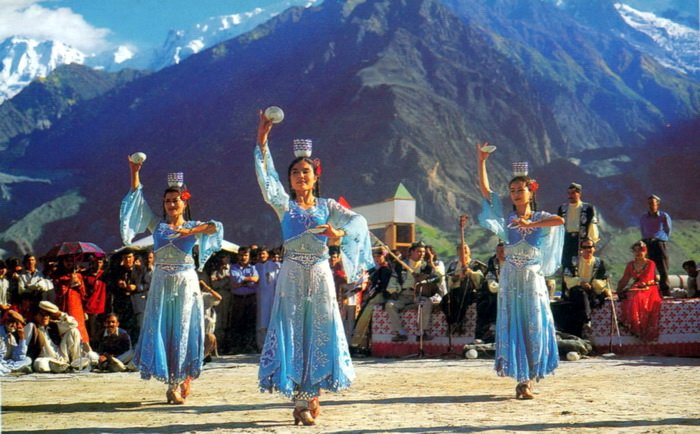

Inspired by the region’s Silk Route history, this festival often takes place in Karimabad during late summer. Cultural pavilions, handicraft bazaars, and music performances showcase the valley’s role as a historic crossroads. It’s a rare chance to see artisans and performers from across mountain communities come together. Be prepared for crowds as both locals and foreign visitors attend in large numbers.
Uchal Festival – Kalash Summer Rituals (Chitral, Adjacent)
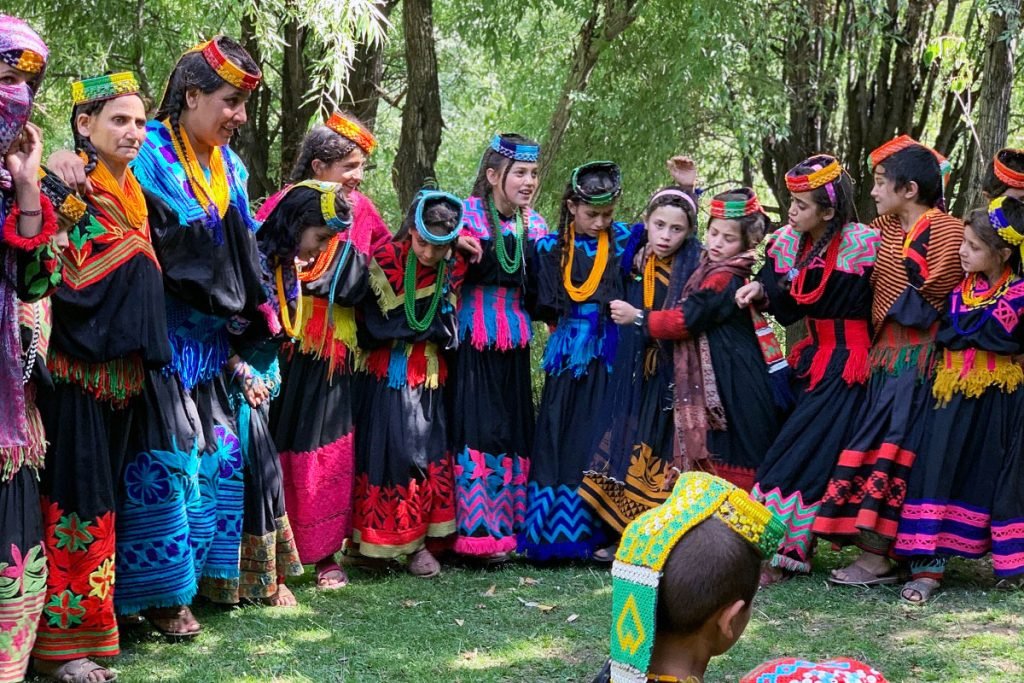

Though outside GB, many travelers combine Hunza tours with Chitral to see the Kalash Uchal in August. Villagers wear elaborate costumes, dance in circles, and offer dairy products to thank their gods for summer harvest. If attending, dress modestly, avoid pushing into dance circles, and respect that some rituals are closed to outsiders.
Winter Festival Gilgit Baltistan Culture: Mountain Solstice Traditions
May Fung – Baltistan’s Winter Solstice Fires
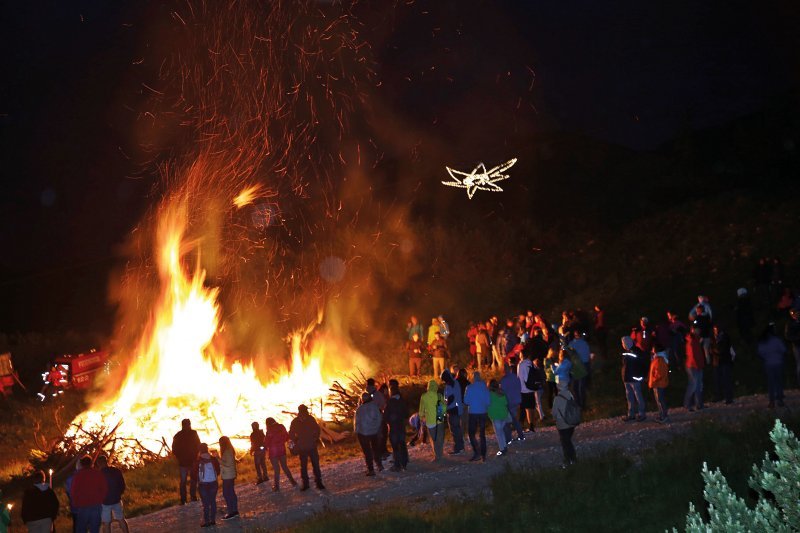

On the longest night of the year, villages in Baltistan light bonfires to ward off darkness and welcome the rebirth of the sun. The ritual, with roots in Buddhist traditions, is marked by communal gatherings, food sharing, and symbolic fire dances. It is a deeply spiritual night; visitors should maintain silence and respect around prayers and chants.
Nasalo – Community Winter Preparations in Skardu
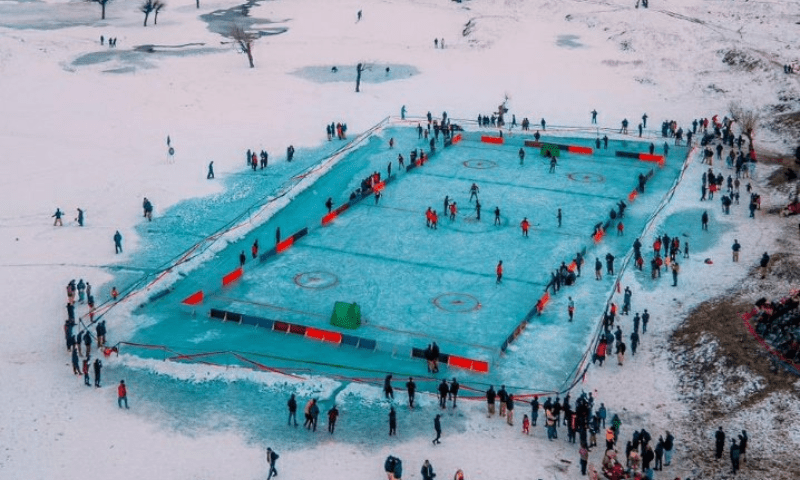

Nasalo involves the distribution of preserved meat and winter stocks, celebrated with storytelling and indoor gatherings. Traditionally, it symbolized survival in harsh climates. Today, it’s both a practical and cultural event, offering outsiders a rare glimpse into how mountain life adapts to severe winters.
Choimus – Kalash Winter Festival (Chitral, Adjacent)


Occurring in December in Kalash Valleys, Choimus celebrates the end of the year with purification rituals, bonfires, and masked dances. Though not part of GB, it’s commonly referenced in cultural overviews of northern Pakistan. Photography should be minimal—many rituals are sacred and not for display.
Regional Festival Gilgit Baltistan Culture Variations
Hunza Valley: Music, Dance, and Seasonal Festivities
Hunza’s festival culture thrives on its orchard landscape and strong Burusho traditions. Alongside Ginani, smaller village fairs feature alghani folk songs, sword dances, and women-led hospitality rituals. Many events are family-friendly and open to respectful visitors. Expect shared meals of apricot-based dishes and traditional wheat preparations.
Baltistan Region: Unique Winter and Religious Events
Baltistan, with its Tibetan cultural roots, sustains rituals like May Fung and Nasalo alongside Islamic festivals such as Eid. Religious processions, storytelling nights, and bonfire gatherings reinforce community ties. Guests are often welcomed, but travelers should be mindful of spiritual customs and avoid intrusive photography during prayers or rites.
Ghizer, Nagar & Gilgit City: Local Fairs and Gatherings
Ghizer hosts spring torch processions like Takhum Rezi, while Nagar shares Hunza’s harvest festivities. In Gilgit city, sports tournaments, artisan fairs, and independence-day celebrations attract large crowds. These events reflect how urban centers blend traditional rhythms with modern commemorations.
Cultural Elements Defining Festival Gilgit Baltistan Culture
Music, Dance, and Performance Arts
From Wakhi ballads to Balti soose rhythms, music is inseparable from GB festivals. Traditional dances such as the sword dance in Hunza or Balti circle dances showcase communal unity. Drums, flutes, and the rabab provide rhythm for hours-long performances.
Festival Foods and Traditional Hospitality
Each celebration includes signature dishes: harissa in Hunza, dried apricot desserts in Nagar, yak and mutton stews in Baltistan. Guests are treated as part of the family—refusing food is considered impolite. For travelers, it’s the best chance to experience seasonal mountain cuisine rooted in survival and abundance.
Handicrafts, Clothing, and Cultural Displays
Festival grounds often double as markets for handwoven shawls, Balti caps, wooden carvings, and embroidered garments. Locals dress in colorful kurtas, shalwar kameez, and region-specific headgear. Purchasing crafts directly supports artisans and sustains endangered skills passed down through generations.
Practical Guide to Festival Gilgit Baltistan Culture
Festival Calendar 2025–2026 (Seasonal Overview)
Below is a typical cycle of celebrations. Dates vary yearly:
- Nowruz: March 20–21
- Takhum Rezi (Ghizer): Late March–April
- Ginani (Hunza/Nagar): Late June–July
- Shandur Polo Festival: Early July
- Silk Route Festival (Hunza): Late August–September
- May Fung (Baltistan): December solstice
- Nasalo (Skardu): December–January
Always confirm dates via Visit GB Events or PTDC before planning.
Transportation, Accommodation, and Travel Logistics
Flights connect Islamabad to Gilgit and Skardu, though weather delays are common. Roads via Karakoram Highway or Babusar Pass (summer) are adventurous but long. During major festivals, hotels in Hunza, Gilgit, and Skardu book months ahead. For Shandur Polo, tents are the only option—carry warm sleeping bags and high-altitude gear.
Cultural Etiquette and Responsible Tourism Practices
- Dress modestly; headscarves for women are recommended in rural Baltistan and Ghizer.
- Ask permission before photos, especially of women and rituals.
- Use local guides—they bridge language and explain customs.
- Limit plastic use; carry reusable bottles and bags.
- Join meals when invited but avoid waste—food has cultural and symbolic value.
The Future of Festival Gilgit Baltistan Culture
Tourism’s Impact on Traditional Authenticity
While tourism brings income, it can risk turning intimate rituals into staged shows. Communities are balancing authenticity with economic need. Supporting local homestays, guides, and artisan stalls helps preserve genuine traditions.
Climate Change and Festival Scheduling Adaptations
Glacial melt, floods, and unpredictable snow patterns are altering festival calendars. Shandur Polo, for example, has faced rescheduling due to heavy rains. Visitors should stay flexible and follow updates from official tourism bodies.
UNESCO Heritage and Cultural Preservation Efforts
Several GB practices are under review for UNESCO’s Intangible Heritage list. Local NGOs and government initiatives aim to document songs, dances, and rituals before they fade. Tourists can play a role by engaging respectfully and amplifying heritage preservation rather than exploiting it.
FAQ
When is the best time to experience festival Gilgit Baltistan culture?
Summer (June–August) is most accessible, with Ginani, Shandur Polo, and Silk Route festivals. Winter festivals are authentic but require experience in extreme cold travel.
Which is the most famous festival of Gilgit Baltistan?
Shandur Polo Festival is the best known, attracting thousands annually to the world’s highest polo ground.
How can tourists respectfully participate in local festivals?
Hire local guides, dress modestly, ask before joining dances, and support community vendors rather than outside stalls.
What should visitors know about festival photography etiquette?
Always seek permission, avoid flash during rituals, and never photograph sacred ceremonies or private family gatherings without consent.
Which festivals are easiest for first-time travelers to attend?
Ginani in Hunza and Nowruz in Gilgit are accessible with good facilities. Shandur Polo is spectacular but demands more preparation.
Conclusion
Festivals in Gilgit-Baltistan are more than colorful events—they are living traditions that connect mountain communities to their history, land, and identity. From the bonfires of May Fung in Baltistan to the vibrant Ginani harvest in Hunza and the dramatic Shandur Polo matches, each celebration offers travelers a window into authentic local life. Experiencing them requires respect, planning, and openness to cultural exchange.
As a visitors, our role is not just to watch but to engage responsibly: honor customs, support artisans, and help preserve the fragile beauty of these highland traditions for future generations.
About the Author
Author: ZunNurain Khalid — Travel & Tourism Specialist, Founder of ExploreX Pvt. Ltd., and advocate for sustainable tourism in Pakistan. With over a decade of experience in digital marketing and destination branding, ZunNurain has worked extensively on promoting Pakistan’s natural and cultural heritage.
References
- Visit Gilgit-Baltistan – Latest Events
- Pakistan Tourism Development Corporation (PTDC)
- UNESCO Intangible Cultural Heritage
- Pamir Times – Tourism Statistics 2024
- APP – GB Festivals Feature
Read More About: From Shandur to Gilgit, the Heartbeat of Traditional Polo in Pakistan

